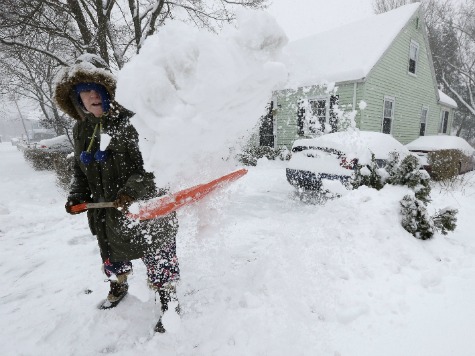President Obama and many of the nation’s top economists entered 2014 predicting a breakout year for the economic recovery. However, troubles in the housing sector indicate more difficulties and several more years of mediocre growth lie ahead.
Residential construction only directly accounts for 3 percent of GDP; however, the vitality of the new and existing home markets importantly influences the economy in other, indirect ways. Home prices significantly impact on consumer confidence and household balance sheets and, in turn, determine American inclinations to spend at the malls, visit new car showrooms, and power broader growth.
For sure, an exceptionally cold winter has discouraged prospective homebuyers–traffic in new home showrooms, housing starts, and new and existing home sales are all way down–but subzero temperatures and snow can hardly account for all the chill gripping the market these past several months.
For many good reasons, housing sales and prices may never fully recover to pre-crisis levels, and the U.S. housing market and the broader economy are now permanently downsized.
Since 2001, the economy has created only 30,000 jobs a month, whereas at least four times as many are needed to keep up with population growth. A historically staggering one out of six men between the ages of 25 and 54 are without jobs and many are without any prospects of gaining meaningful employment.
Many young graduates are stuck in low wage, dead end positions and many only in part-time employment. Wages are stagnant or falling, and too many young people are saddled with huge student loans that will take a decade or more to pay off. Like the rest of us, many are burdened by government-mandated higher health insurance costs and rising taxes.
Consequently, although homes remain reasonably affordable as measured by household income, the disposable income young people have to enter the housing market has dramatically diminished.
So far the housing recovery has been helped considerably by speculators scarfing up foreclosed homes, foreign investors looking for safe havens for capital, and the small percentage of Americans who have done well–and often who put up considerable amounts of cash.
Further exacerbating these problems, the Dodd-Frank financial reforms have needlessly made mortgage lending by small and medium sized regional banks more difficult and costly.
Mirroring the fact that the recovery is not creating enough jobs for new graduates and wage gains for older middle class Americans, the housing market is not seeing really broad based gains.
According to the widely watched Case-Shiller Index, home prices are still 20 percent off their 2006 peak, and it may be the end of the decade before that lost growth is regained.
Those downward pressures on prices are replicated across the economy. For example, many manufacturers, restaurants, and other service businesses can’t raise prices much.
The only industries where prices and salaries are rising strongly seem to be those with generous government subsidies and government sanctioned monopoly power–for example, health care, higher education, cable TV, and Wall Street banking.
The economy is not likely going to tank, but economic growth is not likely to match the president’s optimistic aspirations until policies are embraced other than compulsory health insurance, ever larger education loans, higher taxes, indulging politically-connected monopolists, and excessive government regulation.
Peter Morici is an economist and professor at the Smith School of Business, University of Maryland School, and a widely published columnist. He tweets @pmorici1.

COMMENTS
Please let us know if you're having issues with commenting.